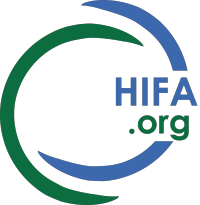Existing information seems to reveal that although the population and smokers have information about the damage, the information is not complete (they know about some diseases, but have less knowledge or are unaware of others), as many articles show.
For example, a study from six EU countries (Germany, Greece, Hungary, Poland, Romania, Spain) showed that. while the majority of smokers knew that smoking increases the risk for heart diseases, lung and throat cancer, there was lower awareness that tobacco use caused mouth cancer, pulmonary diseases, stroke, and there were very low levels of knowledge that it was also associated with impotence and blindness, in all six countries. Knowledge regarding the health risks of passive smoking was moderate in most countries.
• Knowledge of the health risks of smoking and impact of cigarette warning labels among tobacco users in six European countries: Findings from the EUREST-PLUS ITC Europe Surveys https://www.ncbi.nlm.nih.gov/pmc/articles/PMC6661855/
This situation is accentuated among Socially Disadvantaged People, who are the people who suffer the greatest impact of smoking.
As an example we are sharing a study carried out in Poland, but which reflects the reality of many other countries: On this study, the majority of the participants were aware of the fact that smoking cause severe diseases and lung cancer (92%). However, those percentages were lower for awareness of ETS and health risk (69.4%) and for awareness of smoking/ETS-associated risk of stroke and heart attack (57%, 68%). The smokers who were aware of four health consequences of smoking indicated an intention to quit smoking within the next month more frequently when compared to those who did not have knowledge on all of the analyzed harmful effects of tobacco use (19.7% vs. 13.1% ; p < 0.05).
• Milcarz M, Polanska K, Bak-Romaniszyn L, Kaleta D. Tobacco Health Risk Awareness among Socially Disadvantaged People—A Crucial Tool for Smoking Cessation. International Journal of Environmental Research and Public Health. 2018; 15(10):2244. https://doi.org/10.3390/ijerph15102244 https://www.mdpi.com/1660-4601/15/10/2244
In other words, we have a problem: there is a lack of information in the general population, and obviously among smokers.
How can we change this reality?
The tobacco industry, which by definition opposes any effective measure to reduce tobacco consumption – and therefore to decrease its revenues – argues that the problem is due to a "lack of education" and that the government should "educate the population." In fact, the tobacco industry launched youth education campaigns in many parts of the world. But when the impact of the intervention was evaluated, it lacked of effectiveness in preventing tobacco consumption or promoting quitting.
Education alone doesn´t it is not enough to change the current situation of the tobacco epidemic.
There is no single measure (a silver bullet) that increases the knowledge and changes the attitude of the smoker population and promotes quitting, but a series of effective measures have been identified. If most of them are jointly applied in a short time, they prove to be effective in promoting public awareness and increasing smoking cessation rates. These measures are: increasing tobacco taxes, smoke-free environments, strong graphic health warnings on cigarette packs, plain packaging, the total ban on advertising, promotion and sponsorship of tobacco products, and help to quit smoking, among others.
• Tobacco Control Network: 2022 Policy Recommendations Guide https://www.astho.org/globalassets/pdf/tcn-policy-recommendations-guide.pdf
All of these measures are contained in the WHO Framework Convention on Tobacco Control, the first global public health treaty under the auspices of the WHO. This binding multilateral treaty includes Education (Article 12), but also recognizes the need for the comprehensive and progressive application of all the provisions contained therein.
• WHO-Framework Convention for Tobacco Control. https://fctc.who.int/who-fctc/overview
Therefore, we still have a long way to go to improve the health of our populations. But we also have to understand and accept, that education alone is not enough, that we need to use other interventions that socially denormalize the act of smoking and promote smoking cessation.
Dr. Eduardo Bianco
HIFA profile: Eduardo Bianco is a medical doctor and Cardiologist, Certified Tobacco Cessation Expert with a Master’s in Prevention and Treatment of Addictive Disorders. Currently, he is Chair of the World Heart Federation Tobacco Expert Group. Dr. Bianco’s research examines tobacco control and cessation, and he is a prominent member of several organizations that address tobacco control in Latin America. Dr. Bianco has worked for 25 years in Uruguay and Latin America to promote and train in smoking cessation treatment and tobacco control policies. He is also the former Regional Coordinator for the Americas of the Framework Convention Alliance and former Technical Director of the MOH Center for International Cooperation for Tobacco. He is a member of the HIFA working group on substance use disorders. https://www.hifa.org/support/members/eduardo Email: ebianco AT nextgenu.org

